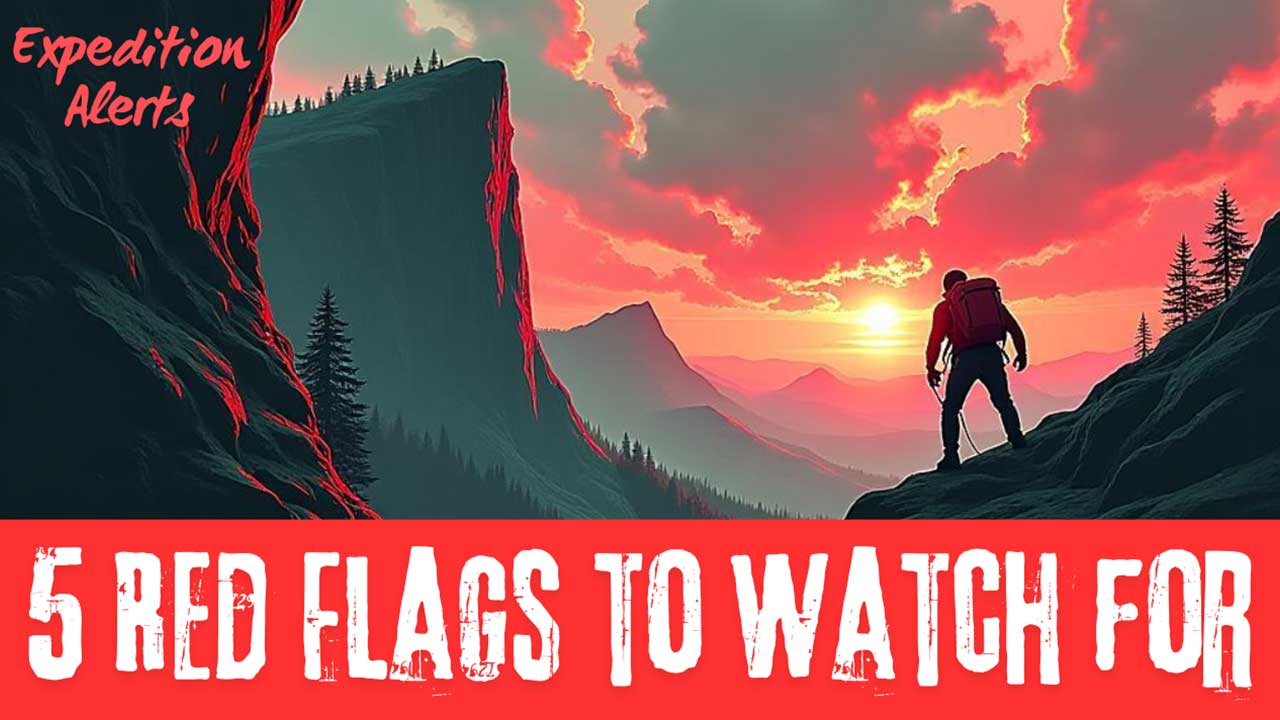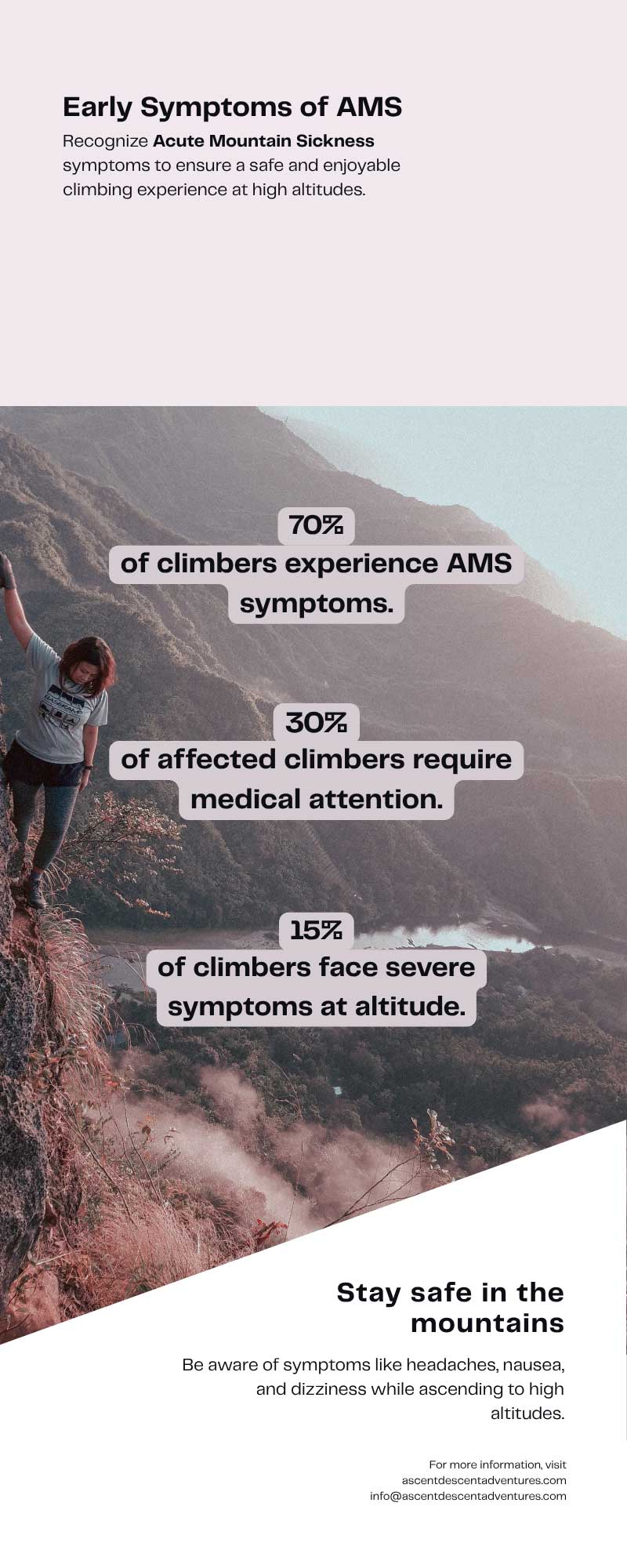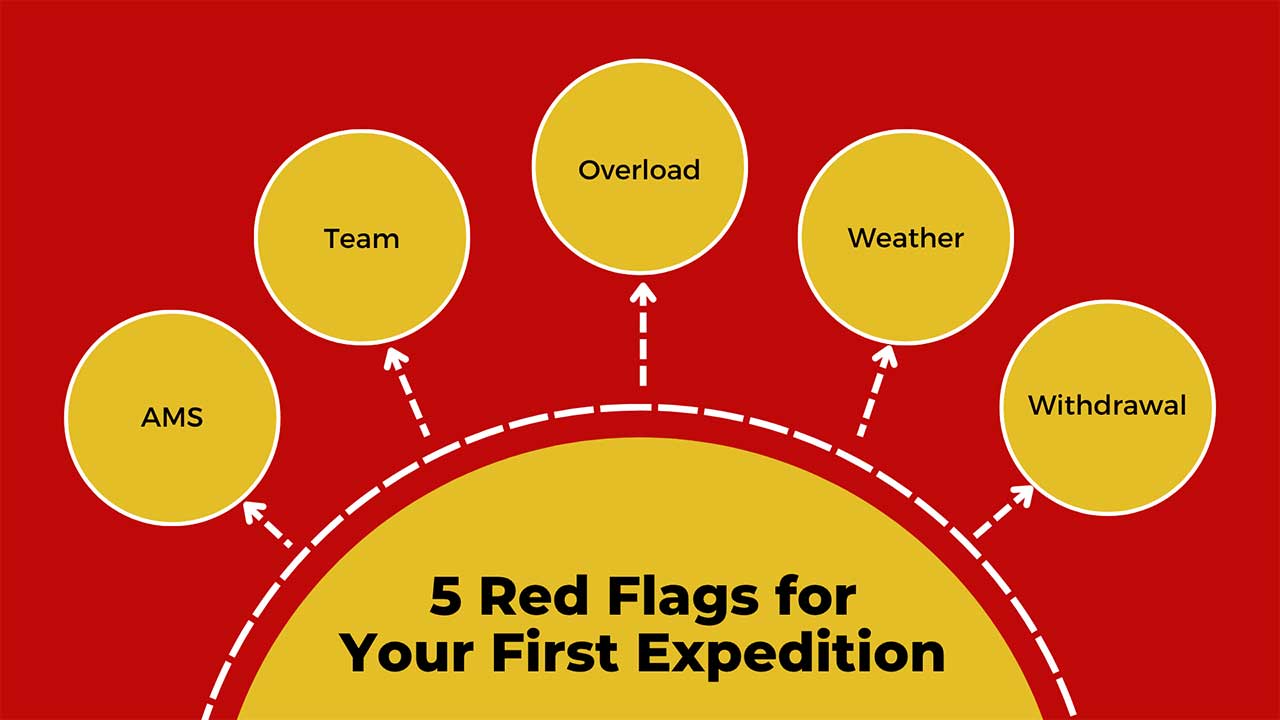5 Red Flags to Watch for During Your First Expedition
Blogs
How to Stay Safe and Aware on Your Debut Himalayan Adventure
Stepping into the world of mountaineering is thrilling—especially when it’s your first high-altitude expedition. But the excitement can sometimes cloud your awareness of the early warning signs that something’s going wrong. Whether you’re climbing your first 6,000-meter peak or trekking over a high-altitude pass, there are certain red flags every beginner must learn to recognize.
At Ascent Descent Adventures, we believe awareness is your first layer of safety. In this blog, we break down the 5 biggest red flags to watch out for during your first expedition—and what to do when you spot them.
1. Headaches, Nausea, or Dizziness: Early Signs of AMS
Why it’s a red flag:
Acute Mountain Sickness (AMS) can escalate quickly. While a mild headache may seem harmless, it’s often the first sign of altitude-related complications.
What to watch for:
- Persistent headache not relieved by rest or water
- Loss of appetite or nausea
- Dizziness or light-headedness
- Difficulty sleeping
What to do:
Stop gaining altitude, hydrate, and inform your expedition leader immediately. Descend if symptoms worsen.

Related: Key to the High-Altitude Success
2. Poor Communication in the Team
Why it’s a red flag:
Silence, confusion, or miscommunication—especially in a remote, high-risk environment—can lead to mistakes and accidents.
What to watch for:
- Lack of clear instructions from the expedition leader
- Team members unsure of their roles or responsibilities
- Delayed responses to safety cues or route changes
What to do:
Always clarify instructions. Ask questions. Good communication is not just etiquette—it’s safety.
ADA Tip: We train all clients in basic mountain communication during expedition prep sessions.
3. Equipment Misuse or Overload
Why it’s a red flag:
Incorrectly packed or used gear can be dangerous. Improper crampon fitting, worn ropes, or over-packed rucksacks often point to poor preparation.
What to watch for:
- Loose straps, torn gear, or oversized backpacks
- People unaware of how to use their ice axe or carabiners
- Missing essentials like headlamps, gloves, or thermal layers
What to do:
Do a full gear check at basecamp and before summit attempts. Ask for help if you’re unsure how to use something.
Download our Beginner’s Gear Checklist (PDF) for free.
4. Rapid Weather Deterioration
Why it’s a red flag:
In the Indian Himalayas, weather can turn within minutes. Beginners often overlook signs of an incoming storm or whiteout, leading to risky situations.
What to watch for:
- Sudden wind speed increase or pressure drop
- Flat, gray clouds building fast
- Temperature dips or unexpected snowfall
What to do:
Never push forward “just a little more.” If your guide suggests turning back, listen. It’s always better to attempt another day than not at all.
ADA Expeditions always carry updated forecasts and equip guides with emergency communication tools.
5. Unexplained Fatigue or Withdrawal
Why it’s a red flag:
Fatigue is normal—but extreme tiredness, lack of motivation, or mental withdrawal may signal a deeper issue: dehydration, hypothermia, or altitude sickness.
What to watch for:
- A normally active teammate slowing down or isolating themselves
- Slurred speech or irritability
- Shivering despite layers or sunshine
What to do:
Always use the buddy system. If you or someone else seems “off,” alert your guide and rest. These early signs often precede serious emergencies.

Final Words: Red Flags Are Not Roadblocks—They’re Warnings
The goal of every expedition isn’t just to summit—it’s to return safely. Recognizing these five red flags gives you an edge not just in safety but also in confidence and leadership.
“The mountain decides whether you climb or not. The art of mountaineering is knowing when to go, when to stay, and when to retreat.” — Ed Viesturs
Our team at Ascent Descent Adventures prepares every client and student with the technical and mental skills to spot danger early—and act fast.
Ready for your first expedition? Explore Beginner-Friendly Expeditions or join the Mountaineering Course to train right.
Recommended Read for Safety & Risk Awareness:
- 5 Common Accidents Beginners Face (and How to Avoid Them)
- 5 Signs You Might Be Getting Altitude Sickness
- 5 Emergency Signals Every Mountaineer Should Know
- 5 Situations Where Turning Back is the Smartest Option